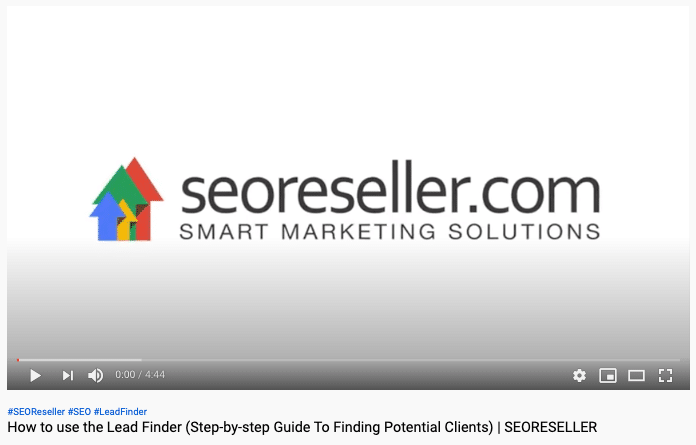SEO is becoming a hot commodity and everyone who’s heard of what it can do wants in on the action. Even though that’s the case, many businesses are having a hard time finding quality SEO Leads. Leads who can spend $1000 or more a month.
How do you find quality leads and turn them into qualified prospects who are ready to close?
We’ll show you the method that will make your lives easier, save you a lot of time and will scale your agency much faster.
By the end of this article, you should be able to find the SEO Leads qualified to turn into paying SEO clients.
1. How To Generate Leads
Whether your goal is to close a $1,000 or $50,000-a-month SEO client, you first need a solid process of generating the right leads.
The lack of quality leads might cost you your SEO agency.
The reason most people have a hard time finding SEO leads is because of two things – it’s either they’re new to SEO or they don’t have a clear process of attracting and closing the right SEO leads.
A. Do-It-Yourself Method of Getting SEO Leads
1. Know what to look for
It’s important to establish your target niche in SEO and set profile parameters. You have to approach this in a calculated manner and avoid doing random searches that will only waste your time.
Set your target market to different types according to their information.
For example, sort them by pain points, the services they need, and the amount they can afford to spend with your agency. If your aim is to generate $2,000+ a month then dentists with incomes of $100,000 to $210,000 per annum would be your ideal prospect. Likewise, if your target is $20,000 a month, then a law firm who has a monthly revenue of $200,000 or more is a good qualifier.
Always ask yourself: Can the SEO lead I’m targeting afford the services I’m offering?
2. Know where to look
There are several sources you can check for possible SEO leads, whether it’s businesses in your area or your target area.
- Search online directories. There are websites like Yellow Pages, CitySquares, Yelp etc. that can help you get SEO leads with the contact information you need like website, email and phone number. It’s also easier for you to browse through them because they show you results based on the niche you choose and location.
- Maps. Tools like Google Maps can be helpful in helping you track the right SEO leads. Head over to maps.google.com, type the keywords you want on the search bar (Example: Law Firm Texas) and it will give you a list of businesses under that keyword.
This method also provides you with the business’ website if it’s available, and a complete address
- Search engines. May it be Google or Bing, you can use them by entering the location you want to target and your chosen niche. For example: “Dentists in Chicago”

- LinkedIn. LinkedIn is one of the best places to find quality leads. It’s a huge community of professionals from different industries. But you have to be ready to make an impression.
Make sure you have everything prepared in your profile and as it should look presentable to your audience.
Communicate with people that are already connected to you. If you somehow stumbled upon a contact whom you assessed is in need of your services then make proper introductions. Otherwise, don’t just randomly drop on people’s pages. It’s not really that hard to connect; almost everybody has a LinkedIn profile and people you met over at an event will most likely have one too.
Joining LinkedIn Groups is also a form of socializing that can get you in contact with new people and potential SEO leads. Seize this opportunity to build your network and gain SEO leads at the same time.
Allot a few minutes a day to grow your LinkedIn strategy. The important thing is to be consistent in your efforts and communicate. There will be updates from groups and people that can be opportunities you don’t want to miss.
Pro-tip: Don’t forget to optimize your website for lead generation. Every digital marketing initiative goes back to your website. if you’re successful in getting attention from LinkedIn and driving them to your website, make sure your leads find the information they need instantly.
B. Lead Finder or a Lead Generator
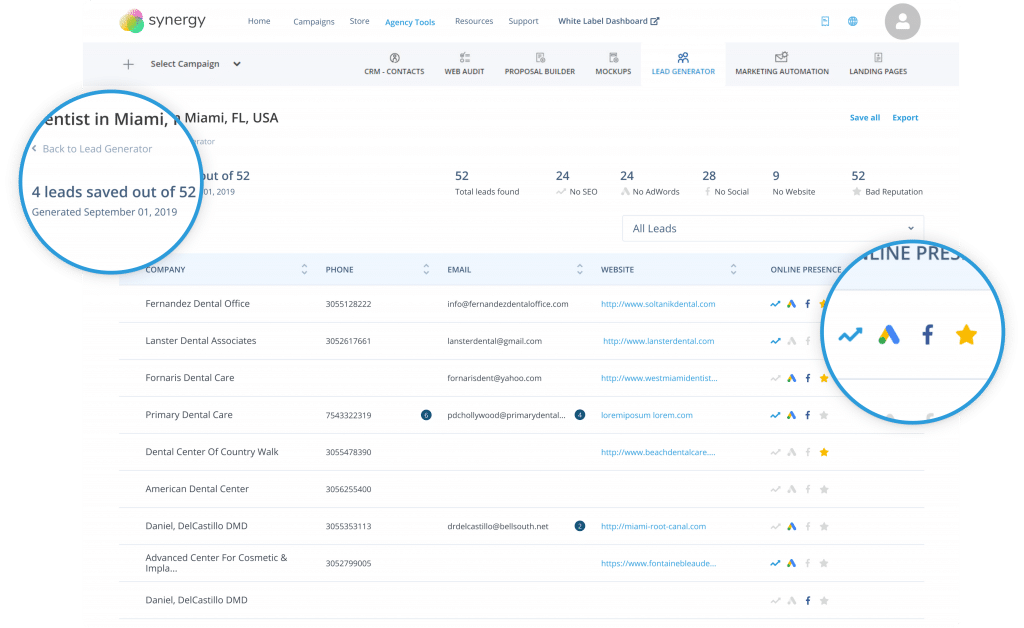
A B2B SEO lead generation tool or a lead finder like ours is going to make discovering SEO leads less daunting. Combine it with a keyword research tool like SpyFu, and you got yourself the ultimate duo for finding qualified SEO leads. Manually generating SEO Leads can take up to an entire day (or more) and may end in lukewarm results. Using this tool will get you leads in less than 2 minutes.
What you’ll need:
- Your chosen niche
- SEO Lead Finder
The process of generating SEO Leads:
- Open your tool of choice. (We, of course, trust our own Lead Finder.)
- In the location search bar, Enter the location you want to target and do the same in the keyword/niche search bar.
- Click Generate Leads, wait for a few seconds and there you have it, a long list of leads ready for picking.
You don’t have to open more web browsers and spend days looking for contacts or information. It’s also faster to check upon their online presence this way.
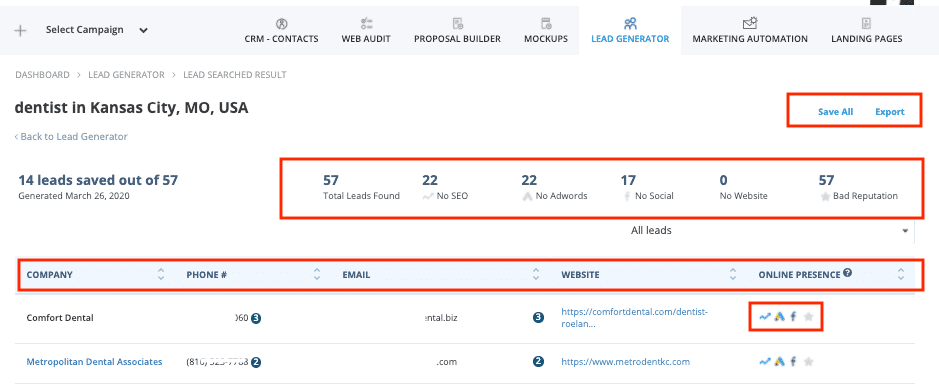
2. How To Qualify SEO Leads
Now that you have your SEO leads, complete with website and contact details, you have to pick the ones that qualify best. The question here is: Do they need your managed SEO services or not?
A. Check their online presence.
Their online presence is the main determinant if they need your services or not.
- Does the SEO Lead have a website? If yes, do they need a website design service for a revamped site?
- Does the SEO Lead have SEO or not? If yes, does it need improvement?
- Does the SEO Lead have Google Ads? If yes, how well are their ads performing?
- Does the SEO Lead have social media? If yes, is their profile optimized?
- Does the SEO Lead have a good or bad reputation? If yes, what needs to be done to preserve their reputation?
One way to easily determine a business’s online presence is by using a search engine and see if they’re ranking in their location and industry. This is a simple process but you need to allot time to it. You have to be specific when doing these searches.
Your searches can include the following query:
Search 1: Location + Niche (This will tell you if they’re ranking online)
Search 2: Business Name of your SEO Lead + Social Media Platform (This will let you know if the SEO Lead has social media like Facebook, Twitter or LinkedIn)
Search 3: Business + Location (This will let you know if they have Google My Business)
An easier way to execute this is by using SEO tools. If you already used the SEO Lead Finder, you’ll immediately see an online presence report included together with the website and contact information of the company.
B. Perform a full SEO audit of their website.
The purpose of conducting an SEO audit is to check for issues on your website. This will really strain the quality of SEO Leads for you.
Once you get the audit report, you can evaluate and start qualifying. If you’ve ticked the boxes that suggest they need your services, you got yourself an SEO Lead.

Learning how to do an SEO audit effectively is one of the best strengths you can have as an agency because not only does it act as an effective SEO lead qualifier but it will also help you in turning a lead into a sale.
So if you see that a website has issues, it’s not ranking on Google and has a bad reputation, you know that you have your SEO Lead.
C. Use Your CRM for Scalability
Now that you’ve qualified and collected your leads, it’s time to add them to your Customer Relationship Management Tool (CRM). This will help you manage, track and identify your customers.
LEAD ACQUISITION FLOW:
QUALITY SEO → LEAD SEO → PROSPECT WON
This is the goal.
A quality SEO lead should be converted to an SEO prospect who has all the intention of buying and convert it to won. However, it isn’t as smooth sailing as the diagram above. A lot of twists and turns happen in the conversion process and that’s where a CRM comes in.
When an SEO Lead is added to the CRM, an account manager can easily track no matter where they are in the conversion cycle.

Using a CRM also lets you divide your general market into segments. Imagine how this will help elevate your content strategy. You can create content and customize depending on which stage they’re in. You can group based on any category – may it be demographics, industry, and niche or the campaign type. For example, this makes it easier to tag prospects for your local SEO service.

It also saves you time when it comes to monitoring, tracking, and analytics. With a CRM, you get to see how people respond to your marketing efforts, see if you’re doing something that works or not. Then modify if needed.
3. How To Contact SEO Leads
Once you’ve zeroed in on an SEO Lead, it’s time to connect. This is the part where you have the biggest chances of closing. You have to keep in mind that you chose this contact because you know they need your services— they just don’t know it yet.
A. Contact via Cold Email
Cold emailing is never easy. Depending on your industry, the average open rate can range from 15% to 29%. These people don’t know you and you’re the stranger sending them a surprise email — so why should they open a message from someone they’ve never met?
You know why and you just have to grab your lead’s attention, then make an impression.
This is what you know:
- Who their target clients are.
- What they want is to grow their business.
- They need to improve their online presence.
- What they need is YOU.
What you should do when sending cold emails:
Learning How To Cold Email Like a Professional is a valuable skill to master. There’s a technical aspect and art to cold emailing that you should combine to effectively make an impression on the kind of SEO Leads that you want. Here’s where to begin:
- Build Trust. Your business domain says everything about you. How serious your business is and how authoritative it is. You don’t want to sound generic by using “@gmail.com” to send your emails or worse, land in the spam folder.
- A Killer Subject Line. First impressions are everything when it comes to cold emailing. You want to grab their attention the right way. You know their pain points, you know what they need, use that to your advantage.
- Personalize.
Name them. Saying a person’s name immediately calls their attention and gets them to focus. Like Dale Carnegie once said, a person’s name is to that person, the sweetest and most important sound in any language.
- Learn more about their business and what they do. Dive into their services and then set the value proposition so that it focuses on their customers first, followed by their business.
- Use the SEO audit report to your advantage
This is your main ammo in connecting with your SEO Lead. Making them aware of the problem areas they need to fix will not only inform them that they need your services but it will also make them perceive you as a figure of authority in this subject.
- State the value of your service
After relaying the pain points it’s now time to provide the solution which is the value your services provide to their business.
- Leave your contact information and business address
You want to end the email properly by stating your information and where they can reach you.
Here’s an example of a great SEO lead and how you can turn their pain point into a selling point:

Here’s a sample of a cold email:
Hi Dr. {{name}},
I was looking around for sunglasses when I came across Houston Eyewear, and I think you have a great collection that more people would really be interested in. I’m in digital marketing and I’ve strategized a plan that I’d love for you to review.
Check if this is something you’d like to work on together so people in Houston can discover your pieces and consider you as their go-to optometrist.
If you’re available, I have time this week and I’ll be looking forward to setting an appointment with you.
Kind Regards,
Itamar Gero
Founder of SEOReseller
###-###-####
Make your cold email process easier by using a marketing automation tool. This tool will help develop your cold-email strategy and draw in the right SEO Leads. Track the actions of your leads whether they opened, clicked or bounced.
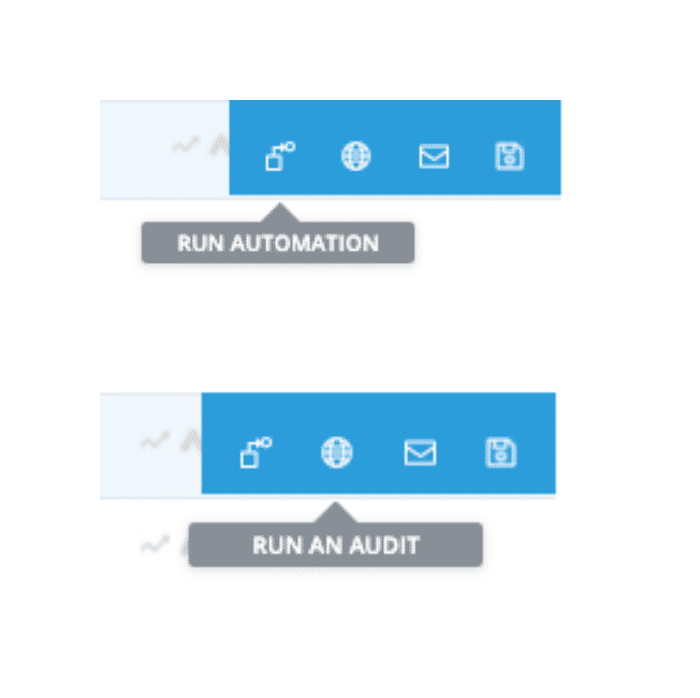
Another benefit you can get from a marketing automation tool is that you can link your email account right into the tool and send emails from there. When a lead qualifies, quickly save it on the spot.
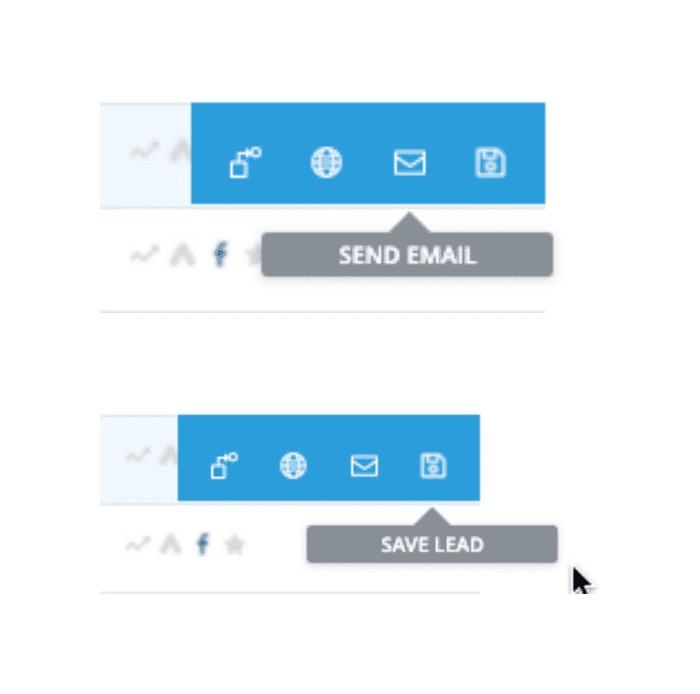
B. Contact via call
Contacting an SEO Lead via call is always an appealing option. There’s something special about reaching out to a potential client verbally and making that connection with them.
- Warm Up Your SEO Lead. People tend to get drawn to and prefer things just because they are familiar with them. This is called the Familiarity Principle which is the purpose of a warm-up email. Nobody likes a surprise call from a stranger who plans to sell to them.
- Send a warm-up email
Introduce yourself using your business email. You want them to have an idea of who you are, at least, for them to know about your brand and business name.
Be creative in sending warm-up emails. It can come with an infographic or something that can provide value to them. Refer to your SEO Audit for this. It helps to segment and categorize your leads allowing you to create materials for each market.
The purpose of this is not to sell, but to get them aware of who you are. This acts as a great opener when you eventually do your cold call.
- If they have social media, connect with them and comment on their posts.
LinkedIn is a great example of introducing yourself and warming-up to your SEO Leads.
2. Make the cold-call personal.
Prepare an outline, not a script. An outline provides the key points you need to talk about, allowing flexibility. All clients are different and will provide you different answers.
3. State the pain points — with empathy.
The purpose of the warm email and the cold call are the same, to secure an official appointment. Your goal is to get their trust and respect so that they will eventually schedule an appointment with you. Letting them know their problems and being empathetic with them will show that you know what you’re talking about and you care.
Don’t try to force and close them on a cold call, but if a transaction is likely to transpire then go and pass them onto the sales team to close.
4. Pitch a commitment. Show them the results you can get them. Your goal at this point is to hook your SEO Lead. Their goal is to know the results they’re going to get.
4. How To Follow-Up SEO Leads Effectively
The aim of following up is to get a response from those who failed to do so. If you’re in this stage of the process, then you already have leads that are warm and these types of middle-of-the-funnel leads are critical to your agency’s success.
How to follow-up Cold, Warm and Hot SEO Leads:
A. Cold Leads
Never give up. Even if a lead is cold, at this point, they’re already familiar with you and what you do. All you need is to reach out to them again and simply ask how they’re doing.
B. Warm Leads
These are the most overlooked leads, and the most important to follow-up on. Warm leads are qualified leads who are not yet sure when to purchase your services. You just have to keep on nurturing them.
- Send them emails.
- Send them valuable content.
- Follow-up with calls.
Just remember to keep it simple.
C. Hot Leads
You got them! They have the four qualifying characteristics: Budget, position to do business with you, they need your services and they’ve set a time for purchase.
These leads are ready for you to close.
Tracking your efforts
The CRM tool is a force to reckon with. It allows you to track a lead and lets you know where they are in the cycle. It gives you a clear view of your contacts’ status that ensures you don’t miss or overlook anyone. In other words, your key to scalability.
It also automates emails and if you need to follow up with just one email, it quickly allows you to do so.
5. Turn Quality SEO Leads To Clients
Congratulations! You’re now at the stage where you know who’s interested and you separate them from the rest of the pack.
A. Go over audit in person or through a call
The SEO Audit that you did in the first stage is even more important at this stage. This is where you thoroughly explain to them the urgency of getting SEO. The report will support your cause while showing them the overall status of their business online.
B. Create a proposal
There’s something about a well-made proposal that makes a deal definite. Telling your prospects what they need and what you can do is one thing, but showing it to them is another.
A well-executed proposal will make it easier for your SEO prospect to understand how your services will impact their business.
Selling SEO services entails a lot of talking, details and explaining. This is the part where you clear up any questions they have and clearly show them the process they will undergo with you.
A well-executed SEO proposal should answer the following questions:
- What are the SEO lead’s problems
- What can you do to address these problems?
- What sets you apart from other SEO agencies?
It’s important to know what goes into an SEO proposal. A well-made SEO proposal will iron out any discrepancies that your potential client may have. So make sure you have everything:
- An overview of your SEO proposal
- Agency background
- What SEO is and why they need it (even if you have explained it to them, put it in writing so that they can go over it any time.)
- The SEO campaign strategy
- Timeline breakdown
- What is required from them
- Testimonials
You can also use tools like an online SEO Proposal Builder. It’s highly customizable, quick and will save you a lot of time.
Finally, you’re ready to sell SEO!
The Cycle Continues
Finding quality SEO leads is a process that’s filled with ups and downs – that’s part of the cycle. The important strength here is to persevere — never say never.
- Generating SEO leads can be done in two ways. You can do it manually by scouring the web. Checking directories, maps, and search engines. Another way is by using a lead generator – you’ll find some SEO software for agencies with its own lead generation tool. This is a more efficient process and gives you more time to spend on other tasks.
- When qualifying leads, always ask:
- Are they able to afford the services you’re offering?
- Do they need your services?
- Are you in contact with the person of authority? The decision-maker who will be the one doing business with you.
- When exactly do they need your services?
- You can push for questions 3 & 4 in the later stages of the process.
- You can contact leads using email or call. Always use a CRM tool to track your leads and detect where they are in the process. You can easily take the necessary action based on their status.
- Always follow-up whether it’s a cold lead, warm lead or a hot lead. Track your efforts with a CRM for scalability
- When turning a hot lead to a sale, always go over their SEO audit in person or through a call. Create a proposal that entails all the information involved in the campaign with you.
Always follow up, and learn from previous results. If the outcome was unfavorable because you weren’t able to seize an opportunity then learn from it. If you’re feeling elated because you just closed your dream client, then don’t sit on your laurel. Start nitpicking on the things that happened. What went right in the transaction? How did you get the lead? What niche was it? What are the pain points that you were able to service? Even the day of the month, you were able to close the deal. These are the kinds of repetitive questions you ask whether you’re starting an SEO business or have been in the industry for more than a decade.
Don’t waste time. Know the task at hand and learn how to schedule them. There are SEO tools and software that can help you work faster and more efficiently. Be savvy and use them to your advantage.
This is a never-ending learning experience, and that’s the rewarding part of your SEO success journey.
